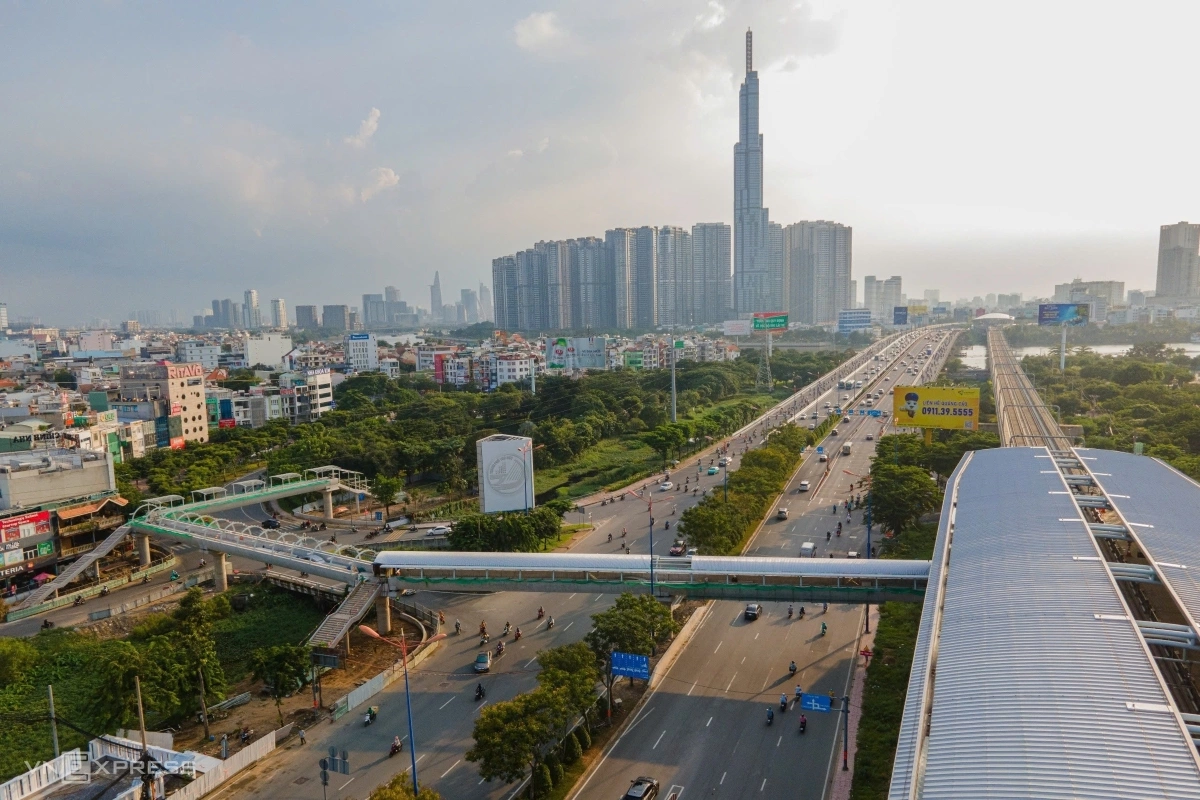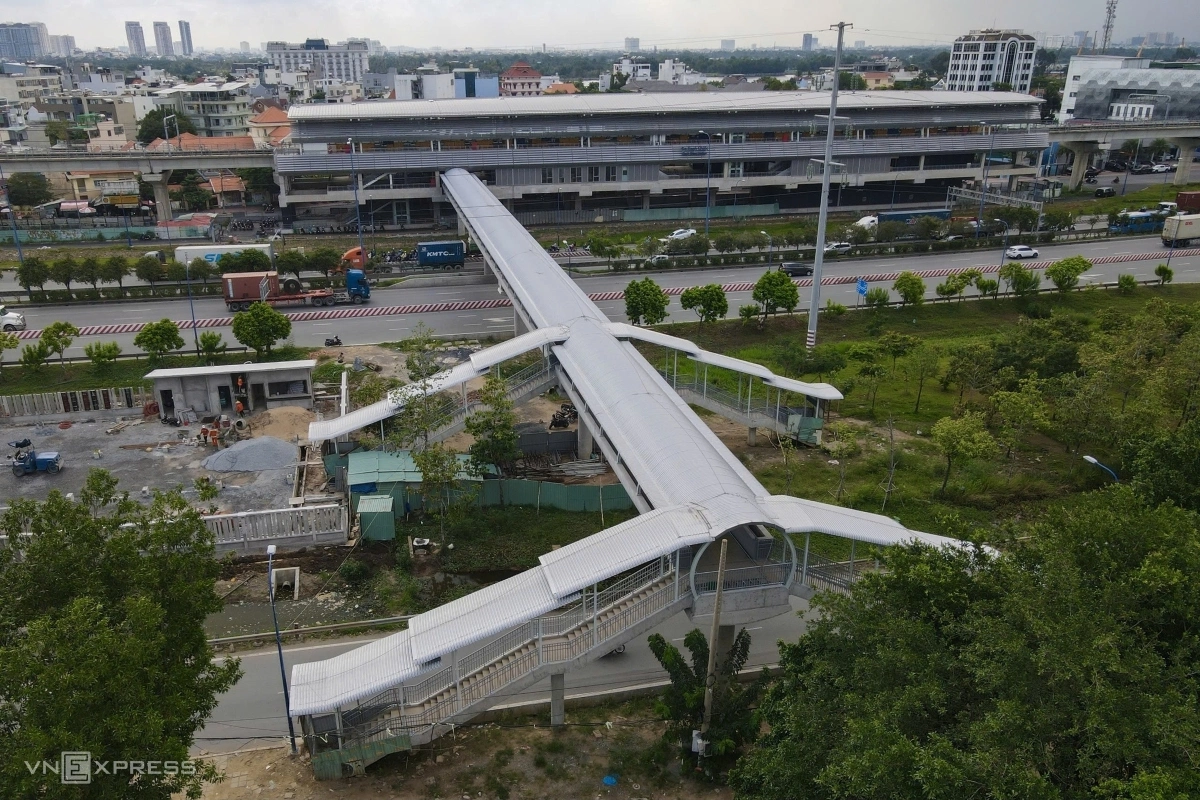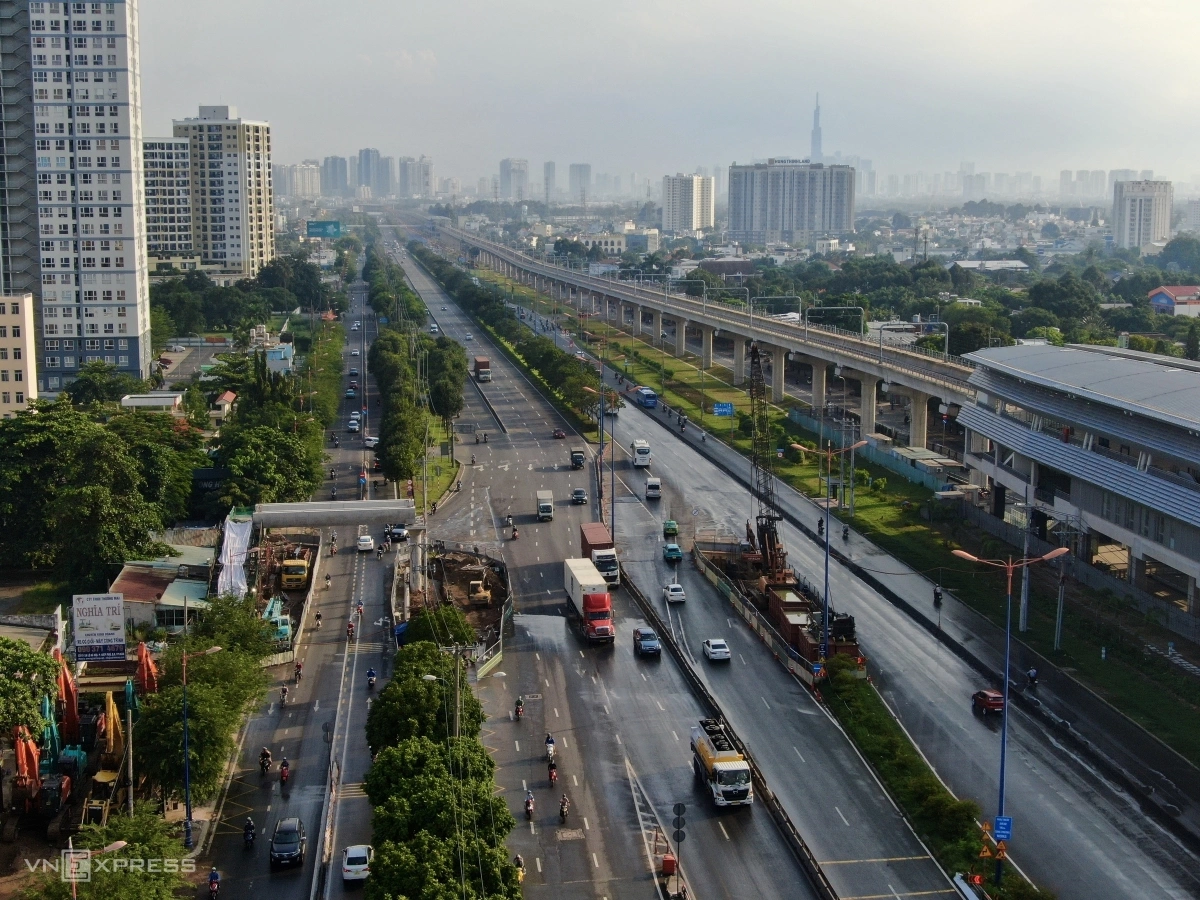The bridges leading to the elevated stations are part of the line's final construction works.
Depending on the location, the bridges are 80-150 meters long and 3.5 meters wide.
According to the Management Authority for Urban Railways of HCMC (MAUR), which manages all of the city's upcoming metro routes, six of the nine pedestrian bridges -- at Tan Cang, An Phu, Rach Chiec, Phuoc Long, Binh Thai, and the High-Tech Park -- are basically complete.
In the photo above is the pedestrian bridge at Thao Dien station.
It is designed with access from three points: on Vo Nguyen Giap Boulevard, Song Hanh Street and the park under Saigon Bridge.
Workers are currently installing the roof of Thao Dien station pedestrian bridge. The contractor pointed out that the roof uses heat-resistant materials.
The bridge is more or less completed, with work on the roofing, electrical system and signage in its final stages and expected to be finished this month.
A worker installing the bridge's roof.
"The process of erecting the bridge's beams in this area was quite challenging due to its proximity to the Saigon Bridge and the high-voltage 110 kV power line," an engineer at the construction site said.
Some 1.2 km from Thao Dien station is Tan Cang station in Binh Thanh District, seen from above here.
Tan Cang is the largest station on the Ben Thanh - Suoi Tien metro route, and has a different architecture from that of the other elevated stations. It will have four tracks (other stations have two) to serve as an interchange station with line No.5 once it is built.
The pedestrian bridge connecting to the High-Tech Park station, completed early this year, was the first to be built.
The highway here is often congested, especially with heavy trucks, and so the bridge is especially important for providing safe access to the station.
The cost for the bridges is included in the metro budget. The line runs 19.7 km between Ben Thanh Market in District 1 and Long Binh Depot in Thu Duc City and has a price tag of over VND43.7 trillion (US$1.75 million).
The bridge connecting to Rach Chiec station too is almost complete and is now awaiting architectural and electrical finishing. It will have four access points.
Below Rach Chiec station will be a parking area for personal vehicles, taxis and buses spread over an area of around 1,000 square meters. Four other stations will also have parking facilities for metro passengers: Thao Dien, Binh Thai, Phuoc Long, and Van Thanh.
At Phuoc Long Station, the stairs leading to the pedestrian bridge have been completed and are currently fenced off, awaiting the metro's operation before being opened for public use.
The site of the pedestrian bridge at Thu Duc Station. Contractors have transported beams to the place. Weighing 46-75 tons, they were cast near the metro line's Long Binh depot before being brought to the construction site.
The Thu Duc and Vietnam National University station bridges are among the last to be constructed. It is planned for them to be completed in September before all nine bridges go through inspection and acceptance and opened to pedestrians by the end of this year.
An artist's impression of the pedestrian bridge at Thu Duc station.
According to MAUR, the bridges are designed to harmonize with their surroundings. On their completion, flower beds and green trees will be placed along the sides. To enable access for people with disabilities, seniors and others, authorities are considering installing elevators at the bridges.
"Besides providing easy access, the bridges will also serve as emergency exits in case of incidents on the stations," a MAUR official said.
In addition to 11 elevated stations, the first metro line will also have three underground stations, all in District 1: Ben Thanh, Opera House and Ba Son.
After multiple delays the line is 98% complete, but disputes persist with its Japanese contractors.
Hitachi, the main contractor, has claimed that delays adding up to 4,124 days require the city to pay it VND4 trillion (US$156.6 million) in recompense for its losses.
The problem has yet to be sorted out.
















